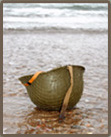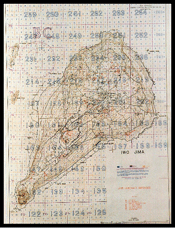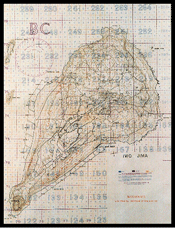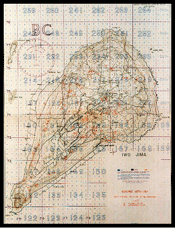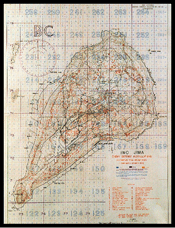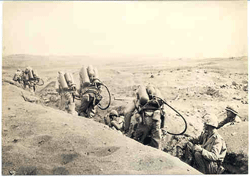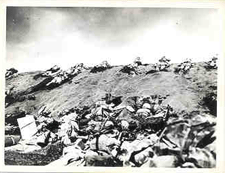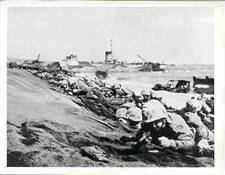 |
The invasion of the volcanic island of Iwo Jima was the bloodiest battle of the war. Approximately 7,000 Marines were killed, another 23,000 wounded. The Japanese suffered casualties of nearly 22,000 men. The Japanese plans called for no survivors; their goal was to kill at least 10 Americans before they themselves were killed. Iwo Jima's importance was it's location: 700 miles from Tokyo, half the distance from the nearest U.S. air base on Tinian.
Original print of the Joe Rosenthal photograph of the flag-raising on Mt. Suribachi, developed on Guam. |
|
| |
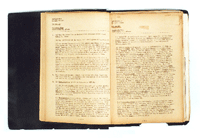 |
A complete set of the invasion plans for Iwo Jima. |
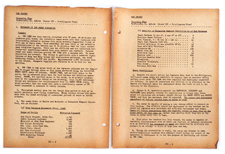 |
|
| |
 |
Preferred assault plans (left) and alternative Marine assault |
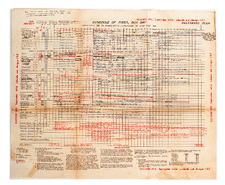 |
"Schedule of Fires, Dog Day, Revision 1" |
|
| |
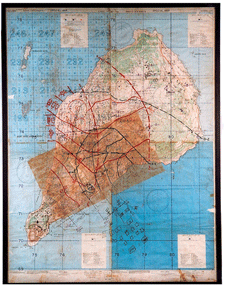 |
Original draft of the landings on overlays of Iwo Jima |
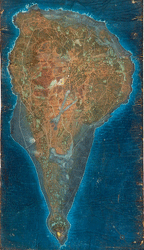 |
This 32" x 48" topographical scale model of Iwo Jima was used on board the escort carrier group flagship, the U.S.S. Makin Island, and was used during the invasion. The Makin Island, commanded by Rear Admiral C.T. Durgin, arrived off Iwo Jima on February 16, 1945, and planes from the ship made pre-invasion strikes. The Makin Island continued to provide aerial support until March 8. |
|
| |
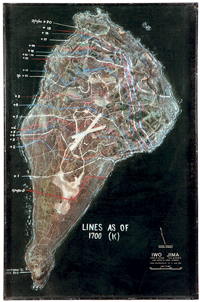 |
This 40" x 70" topographical scale model of Iwo Jima was transferred from the U.S.S. El Dorado when command was transferred to the U.S.S. Auburn. It was saved by a member of General Holland Smith’s staff. The Auburn had arrived at Tinian in early February, where she began final rehearsals for the assault on Iwo Jima. During the operation, the ship coordinated and directed the movements of several hundred ships attached to Amphibious Group 2. She remained off Iwo Jima until March 27. The colored chalk lines represent the front lines each day. |
|
| |
| Allied maps of Iwo Jima, showing Japanese locations of Anti-aircraft defenses; Blockhouses; Defense Installations; and Covered Artillery. |
|
| |
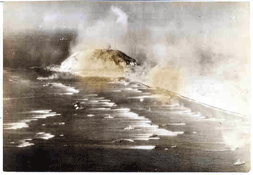 |
The wakes of U.S. landing craft streak the water as U.S. Marines assault Iwo Jima, Feb. 18, 1945. To the left is Mt. Suribachi. |
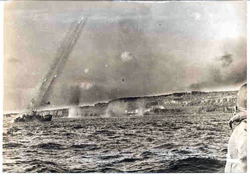 |
Rockets fired from a landing craft pour onto the volcanic terrain of Iwo Jima during the initial American landings. |
|
| |
|
| |
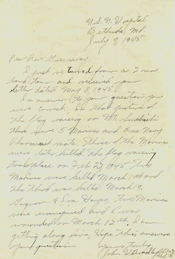 |
JOHN H. BRADLEY: Letter from the U.S.N. Hospital. July 9, 1945. “In that picture of the flag raising on Mt. Suribachi there were 5 Marines and One Navy Pharmacist mate. Three of the Marines were later killed. The flag raising took place on Feb. 23, 1945. Two Marines were killed March 1st and the third was killed March 19. Gagnon & Ira Hayes, two Marines were uninjured and I was wounded on March 12th.” Bradly was one of the flag raisers; his son was the author of "Flags of our Fathers". |
|
| |
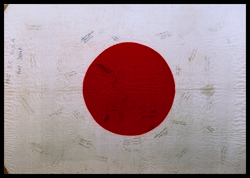 |
This flag was signed by approximately 35 Marines from the 28th Marines, 5th Division. 3rd Company. The 28th Regiment took Mt. Suribachi. The flag belonged to "S/Sgt B.C. Viola" and was signed after the Iwo Jima battle, either in Japan or Hawaii. |
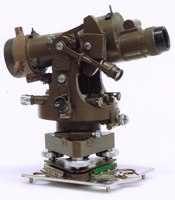 |
Japanese theodolyte precision surveying instrument, used to engineer fortifications on Iwo Jima. |
|

